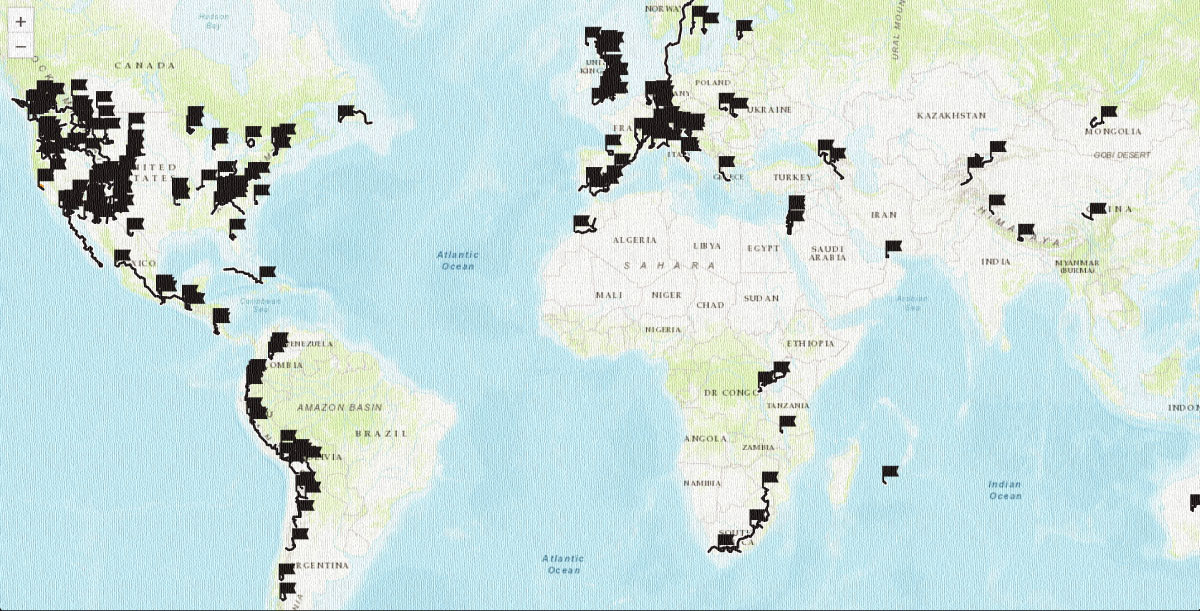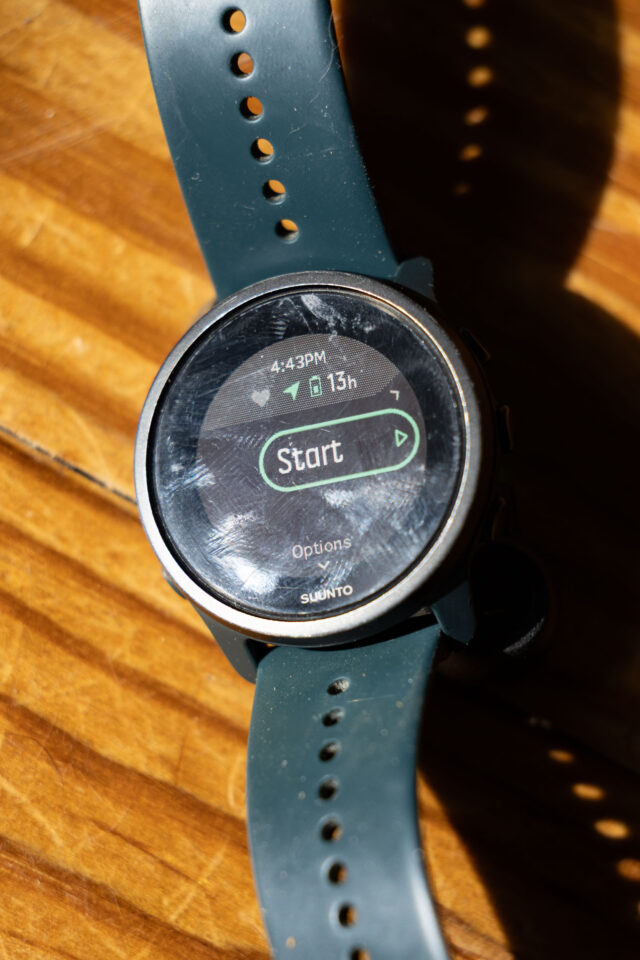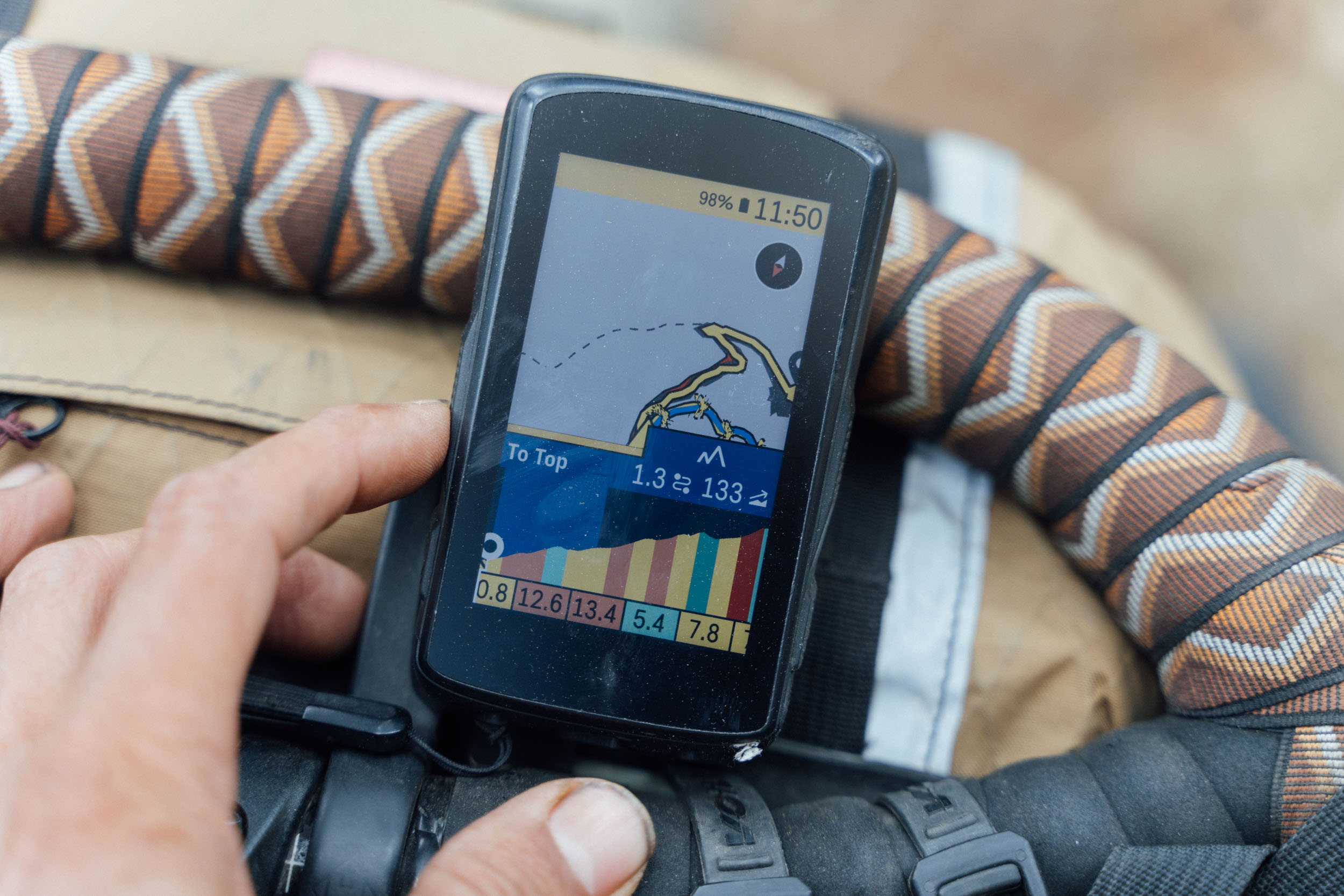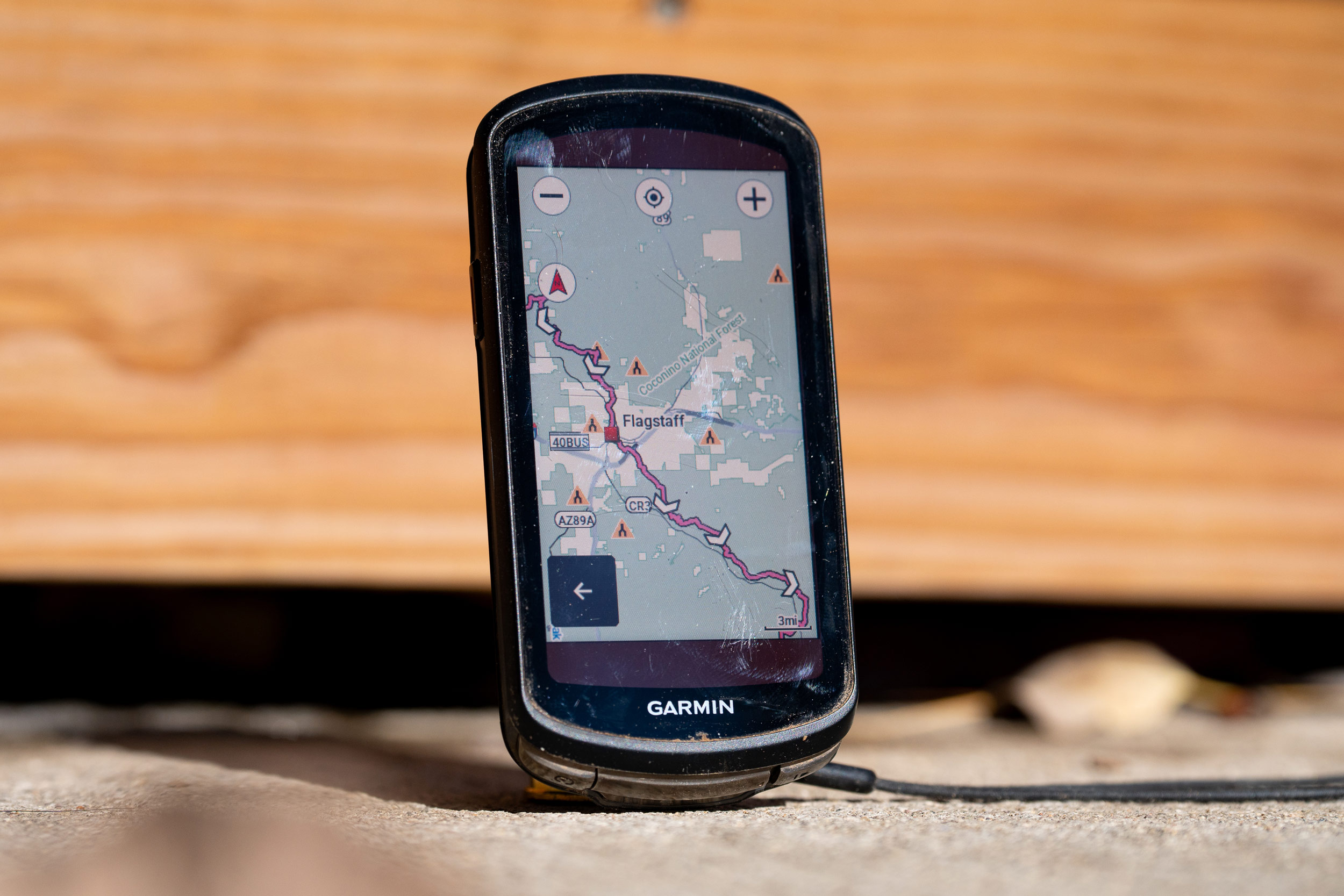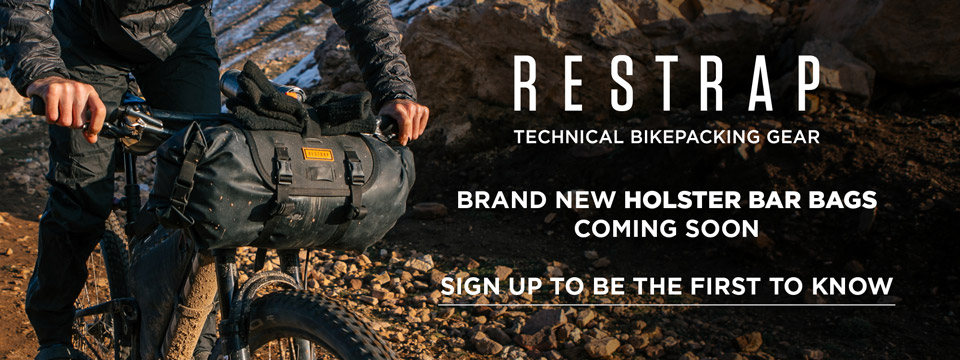Suunto Peak 5 Review: Just Enough
With so much cycling-specific technology on the market, it can be tough to find products that offer true value for money. When Nic set out to combine navigation, tracking, and time-keeping needs into one device, it seemed like a lot to ask of a single piece of technology. After two years of wearing a Suunto Peak 5, he might have found exactly what he was looking for.
PUBLISHED Mar 27, 2025
What is the Suunto Peak 5?
The Suunto Peak 5 is an activity-tracking watch that allows you to log your runs, rides, and physical activities of any kind while tracking location data, heart rate, and other means of measurement like steps and elevation changes. Described by Suunto as a “small and light running watch for beginners,” the Peak 5 features a modest, round, silver bezel, five buttons, a silicone band with variable adjustment through perforations, and a notched charging port located on the rear of the watch. Not undersized or oversized, I found the watch face to be more in line with analog watches as opposed to the sometimes bulkier, larger faces of watches with the capacity to display maps and other forms of data.

The Peak 5’s digital watch face presentation is varied, informative, and aesthetically pleasing. With a variety of options, the face I’ve opted for in my two years of use displays numerical time, an adjustable notch beneath the central time display that can cycle between battery percentage, the date, hours trained (of said week), the sunrise or sunset, and a percentage that shows the illumination of the moon phase(!). The face is also surrounded by a sort of sundial that lines the 24-hour cycle accompanied by a gradient-like bar that denotes the amount and presence of daylight. It’s a cool feature that serves to remind me how much time I have left to squeeze in a run, ride, or walk. Aside from some other basic features like a timer and activity logbook, heart rate data and activity tracking sit at the fore of the device’s function. From the base, time-centric home screen, users can cycle through a concurrent heart rate reading, a “resource” measure (a value given dependent on the amount of rest versus strain accumulated), steps, training volume, and sleep. From the activity tracking screen, users can log most basic activities through the preset modes or through an option labeled “other.”
Suunto Peak 5 Battery life and tracking
The quality-of-life feature that sold me on the Peak 5 was its battery life. Before my time with the watch, I used a Garmin Edge 130 cycling computer to track my rides. Because the Garmin displayed a simple percentage, I had to learn how much use-time correlated to a particular level of charge. The Peak 5, however, tells you exactly how long the tracker will last before recording an activity. As someone who tends toward six to eight-hour days in the saddle, having a precise measure of how long the battery lasts is invaluable. Furthering that point, the Peak 5 has three distinct tracking modes for activities: Performance, Endurance, and Tour. Each mode is differentiated by a difference in color–green, yellow, and red, respectively– with each dialing back the frequency in which it logs GPS “breadcrumbs” in favor of power savings. At around 90 percent, I can get well over 100 hours of tracking on a single charge in its most conservative tracking mode–Tour. But, even in Performance mode, there’s a solid 20-some-hour range of precise tracking data.
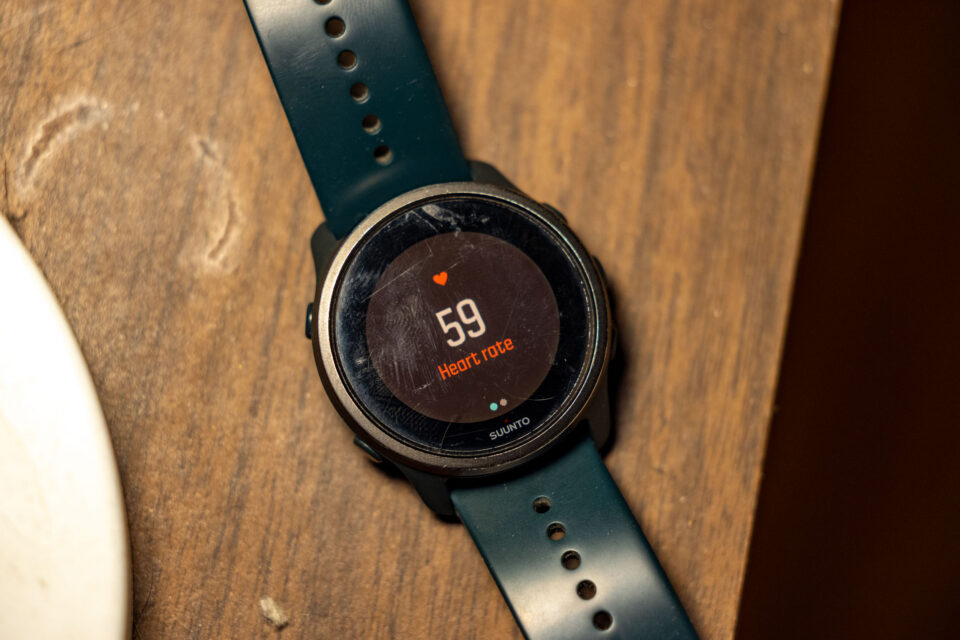
For my cycling-oriented use, I found performance to be the most pertinent, as moving quickly with the limited breadcrumbs on Tour or even Endurance mode is enough to distort typical tracking data. However, I’d be willing to bet the 20+ hour range is enough for most people. Tour and Endurance appear more applicable to running or hiking, where speeds are much slower. Though there is a custom mode that allows users to tweak some of the tracking features on a more granular level, it’s not something that significantly changes the usage of the preset modes. All that said, the battery life when not tracking any kind of data extends well past a week, which is more than enough to not ever really think about.
Tracking data aside, though, one of the main reasons I sprung for the tracker was to get an idea of how well I sleep. If there’s one thing I’m bad at in this life, it’s getting enough sleep. It will often take me hours to get an ounce of shut-eye, and even then, my body tends to reject anything over five or six. Simultaneously, my dawning internal clock is dialed as I wake up with the rising sun on any given day. With shocking accuracy, the Peak 5 gives a daily estimate of the quality of your sleep through both a percentage score presented to users when they wake up (usually upon taking their first steps of the day) and through detailed metrics in its correlated phone application. As expected, features in the phone application expand on the data collected through the watch and offer long-term analysis through some basic albeit informative infographics. Sleep, activity, and performance goals can be set, with the app using a Strava-esque feed to track activities.
Peak Value
The Suunto Peak 5 retails at $200 USD, which is part and parcel for watches with this many features. What I’d argue, however, is that it does better than most in the value watch category through a number of intended and unintended benefits. For the sake of comparison, a few years ago, a friend gave me an entry code for the WHOOP–an activity tracking “goods-as-a-service” that provides users with a small band-like device. At $30 USD per month, the WHOOP will give you a similar albeit slightly more in-depth analysis of your performance and sleep data. The catch is that the activity band doesn’t serve a functional purpose outside of WHOOP-ing, you’re tied to the in-phone app for any form of actionable use, and the aforementioned cost of a subscription. It should be noted that the WHOOP has various social features like clubs, where you can compete with your friends via an activity score, and the actual analysis of your activity heart rate data is more comprehensive than what’s offered on other apps. However, given my desire to curb competition and the fact that I’m never training for anything in particular–I couldn’t care less about said features.

As stated, I started using the Suunto Peak 5 to see if it could replace my Garmin Edge 130 in a meaningfully way. While the above details what I’ve enjoyed and found useful about its features as a heart rate monitor and general activity tracker, the area it failed to beat the cycling computer out on was navigation. Though the Peak 5 offers some very barebones routing features, it’s less than ideal for a few reasons. The Garmin Edge 130 wasn’t a massive upgrade in terms of clarity, as it only offered single line-oriented tracking, but the Peak 5 suffers as a cycling navigation tool for reasons both inherent to its design and one or two flaws. Generally, users will mount computers just in front of their handlebars such that stats or maps are always within eyesight. Because the Peak 5 is doubling as a heart rate monitor, it doesn’t make sense to strap it to the bars for what is pretty limited navigation in the first place. It works in a pinch, as it did for me at my first Nutmeg Nor’Easter, but I wouldn’t use it for much else.

Through both of these experience-driven examples, I think the Suunto Peak 5 is my Goldilocks device. It isn’t an endlessly costly, overbearing activity tracking device that the WHOOP is, nor is it a niche cycling gadget. Its a simplistic activity tracker for someone who is pretty much always on the go, and doesn’t need their metrics or activity tracker to be linked or integrated into every other aspect of their life. And that’s sort of what this comes down to for me. If all you want to do these days is track activities, the phone you likely already have will do just fine. However, as soon as you start going into places with limited service or even longer days, the demand activity tracking places on a device will drain your phone’s finite battery. With some creative thinking around route planning, the Suunto Peak 5 is a device that can effectively replace the need for my bike computer, while also serving as a relatively noninvasive heart rate monitor, lite navigation tool, and wrist accessory.
A Note on Mind Mapping
As I said before, it takes a little bit of a unique approach to route planning to be okay with the Suunto Peak 5 as a sole-ride device. I’ve got a lot more to say on this concept, but something I employ a fair bit in my riding is something I like to call “mind mapping.” Instead of constantly referring to routes that one can download on a cycling-specific device, I take to my local routes and roads with an open mind. I spend a lot of time on Google Maps and Ride With GPS, and I rely on friends to show me where the good stuff is. Eventually, I take it upon myself to correlate the physical environment with what is available on a map, and pretty soon, I can get around through a sense of direction and memory alone. I say all this because I think it’s both a useful practice for any technologically averse cyclist and something that allows me to justify only using the Peak 5. Sure, not all of us have the time to take a lax approach to route guidance, but, I think true navigation is something we’ve lost in today’s world. I know people that map themselves to their jobs, sometimes less than 15 minutes from their homes.

It’s a minor, seemingly unrelated concept, but one that exists within the purview of my use of the Suunto Peak 5. In my view, technology can be a great aid without being a crutch. The clearly delineated heart rate zones and the speedometer is a useful tool that informs me of some pretty important information I might not otherwise have as clear a handle on. But that’s where the help stops. I’m not lost without my watch, and it’s okay if I don’t bring it with me. Intentionally or not, the Suunto Peak 5 isn’t trying to take over my reality. It’s just a useful tool that allows me to add some objective quantification to my physically-oriented lifestyle.
- Model Tested: Suunto Peak 5
- Actual Weight: 39 grams (1.38 oz)
- Place of Manufacture: Finland
- Price: $199
- Manufacturer’s Details: Suunto
Pros
- Long battery life
- Minimalist design and functionality
- The price is reasonable given the amount and depth of features
- No monthly fee for insights
- Nice quality-of-life features and display
Cons
- A little inconsistent with HR readings
- The charger is certainly a weak point
Wrap Up
So, if you’re like me and like low-tech devices with limitations and purpose, a simple tracker like the Suunto Peak 5 might be right for you. Again, there’s value to owning things. Here, you get to own a decent-looking watch + HR monitor + GPS device, etc. Part of the reason I’ve not gone for something like, say, an Apple Watch, is because those devices seem tailor-made to draw you in with features like sleep tracking and HR monitoring, and they ultimately want you to receive notifications from native apps and social media platforms.
For more on the Suunto Peak 5, visit Suunto.com
Further Reading
Make sure to dig into these related articles for more info...
Please keep the conversation civil, constructive, and inclusive, or your comment will be removed.

We're independent
and member-supported.
Join the Bikepacking Collective to make our work possible:


